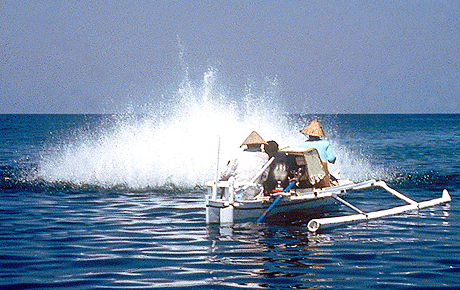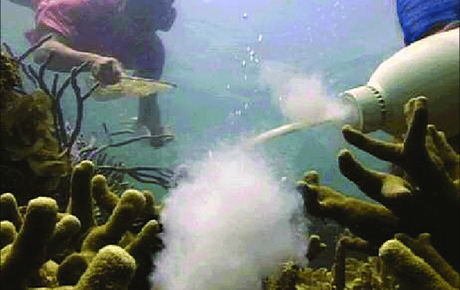CORAL REEFS ARE RAPIDLY DISAPPEARING DUE TO HUMANS
We are applying so much pressure to the reefs in all different directions, they are dying off and so will the marine life they provide homes to.
climate change
The most significant and immediate danger to coral reefs is bleaching, a direct consequence of rising ocean temperatures caused by climate change. Similar to humans having a temperature limit, corals experience stress when water temperatures increase. This stress causes them to expel zooxanthellae, the colorful algae living in their tissues that provide essential nourishment through photosynthesis.
The loss of their algae leaves them white as you can see through to their white skeleton, hence the term “bleaching”. It leaves them weakened and vulnerable to disease and starvation. Although corals can potentially recover if the stress subsides, prolonged bleaching events frequently lead to widespread coral mortality.
Unfortunately, recent years have witnessed increasingly frequent and severe coral bleaching cycles globally. For instance, significant bleaching events have been documented across the Great Barrier Reef, Southeast Asia, and the Caribbean in the past few years, often linked to record-breaking ocean heatwaves. These events are occurring with alarming regularity, reducing the time corals have to recover between stressors, leading to significant reef degradation and loss of biodiversity.
The United Nations Intergovernmental Panel on Climate Change (IPCC) has issued stark warnings regarding the future of coral reefs under continued warming. As the UN council highlights, With 1.5°C of warming, coral reefs are projected to decline by 70-90%. At 2°C, more than 99% of coral reefs are expected to be lost. Today, we are already at 1.5°C and our emissions are still rising.
Climate change is a big challenge. Use your vote to push for systemic change and use your individual actions to reduce emissions and spread awareness. In the meantime, coral restoration organizations are trying to identify heat resistant coral strains to propagate, trying shading techniques during summer and researching other methods to buy the reefs a little more time while humanity tries to solve climate change.
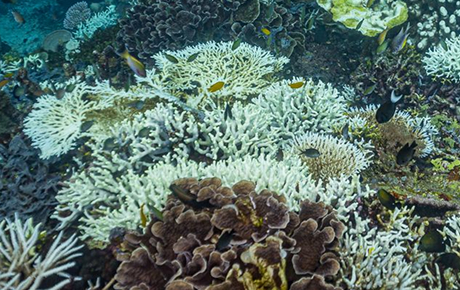
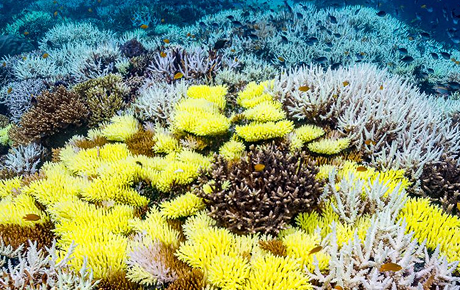
Lack of Wastewater treatment
Wastewater poses a significant and growing threat to coral reefs globally, particularly in developing countries like Indonesia. Untreated or poorly treated sewage discharged into coastal waters introduces excess nutrients (nitrogen and phosphorus) and pathogens. The nutrients stimulate the overgrowth of algae, which can smother corals by blocking sunlight and competing for space. Pathogens can lead to increased coral disease. The resulting degradation not only impacts the biodiversity of these vital ecosystems but also undermines the critical services they provide, such as shoreline protection, fish nurseries, and a source of livelihood for coastal communities.
The problem in Indonesia is exacerbated by lax enforcement of environmental standards and insufficient regulatory oversight, particularly concerning coastal development and marine tourism. Many rapid coastal developments, from small guesthouses to larger resorts, proceed without adequate or any wastewater treatment facilities, leading to the direct discharge of raw sewage into sensitive reef areas.
This is compounded by practices within the live-aboard industry, including those operating in globally renowned bio-diverse sites like Raja Ampat. Despite the pristine appearance of these remote areas, many liveaboard vessels routinely discharge their wastewater directly onto the reefs.
When picking a tour operator or hotel, make sure you do your homework to ensure they do not damage the reefs. Looks for certifications like Green Fins, Green Key or listings that detail how they treat their wastewater.
improper mooring
Improper boat moorings represent another significant source of coral reef damage, particularly prevalent in popular dive and snorkeling sites. When boats drop anchor directly onto coral formations, the heavy anchor and chain can smash, abrade, and dislodge corals, causing immediate and irreparable destruction. This damage is not limited to the initial impact; as the boat swings with currents and winds, the anchor chain can drag across large areas of the seabed, creating wide swaths of scarred and barren reef. Even seemingly small boats can inflict substantial damage, and repeated anchoring in the same area by multiple vessels can quickly decimate a vibrant reef. The lack of designated mooring buoys, or the failure of boat operators to utilize them where available, forces reliance on destructive anchoring practices, hindering the natural recovery of these fragile ecosystems and diminishing the very attractions that draw visitors to these marine environments.
Once again, make sure your snorkel or dive operators only use designated mooring bouys. We have worked with the Ped community to implement designated mooring points in our coral restoration site in Nusa Penida. The existing rubble needs to be stabilized and existing fragments can be planted.
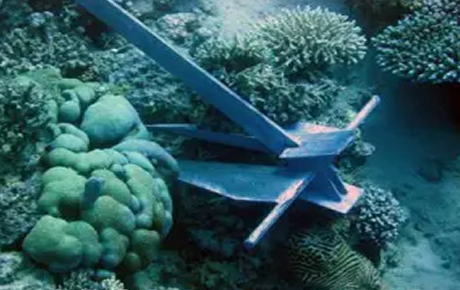
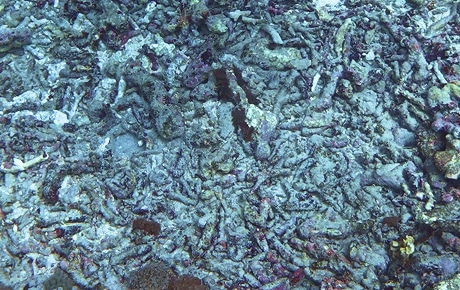
Bad fishing practices
Two fishing practices stand out as culprits common within the Coral Triangle in South East Asia.
Dynamite fishing (also known as blast fishing) and cyanide fishing are two of the most destructive and illegal fishing methods rampant in Indonesia, devastating its incredibly rich coral reefs. Dynamite fishing involves detonating explosives underwater, which indiscriminately kills marine life and, more critically, shatters the physical structure of the coral reef, turning vibrant habitats into unstable rubble.
Cyanide fishing, on the other hand, involves spraying sodium cyanide into coral crevices to stun fish for the lucrative live fish trade. Cyanide is highly toxic to corals, causing them to bleach, sicken, and die, leading to widespread reef degradation. Indonesia is a major player in the global live ornamental fish trade, exporting over 1.7 million kg of live ornamental fish in 2023, valued at over $39 million.
Fortunately, communities are coming around to the short-term profit that kills the golden goose in the long run. Once the bad practices stop, since there is an existing reef and conditions are conducive for coral growth, this is where coral restoration can step in by fragmenting the existing corals or transplanting from adjacent site to quickly re-populate these areas with healthy coral fragments accelerating recovery of the reef structure and attracting back marine life. Of course for long term success, the local community needs to be involved and alternate income sources like coral farming or eco-toursim need to be identified so they do not fall back into destructive practices for subsistence.
